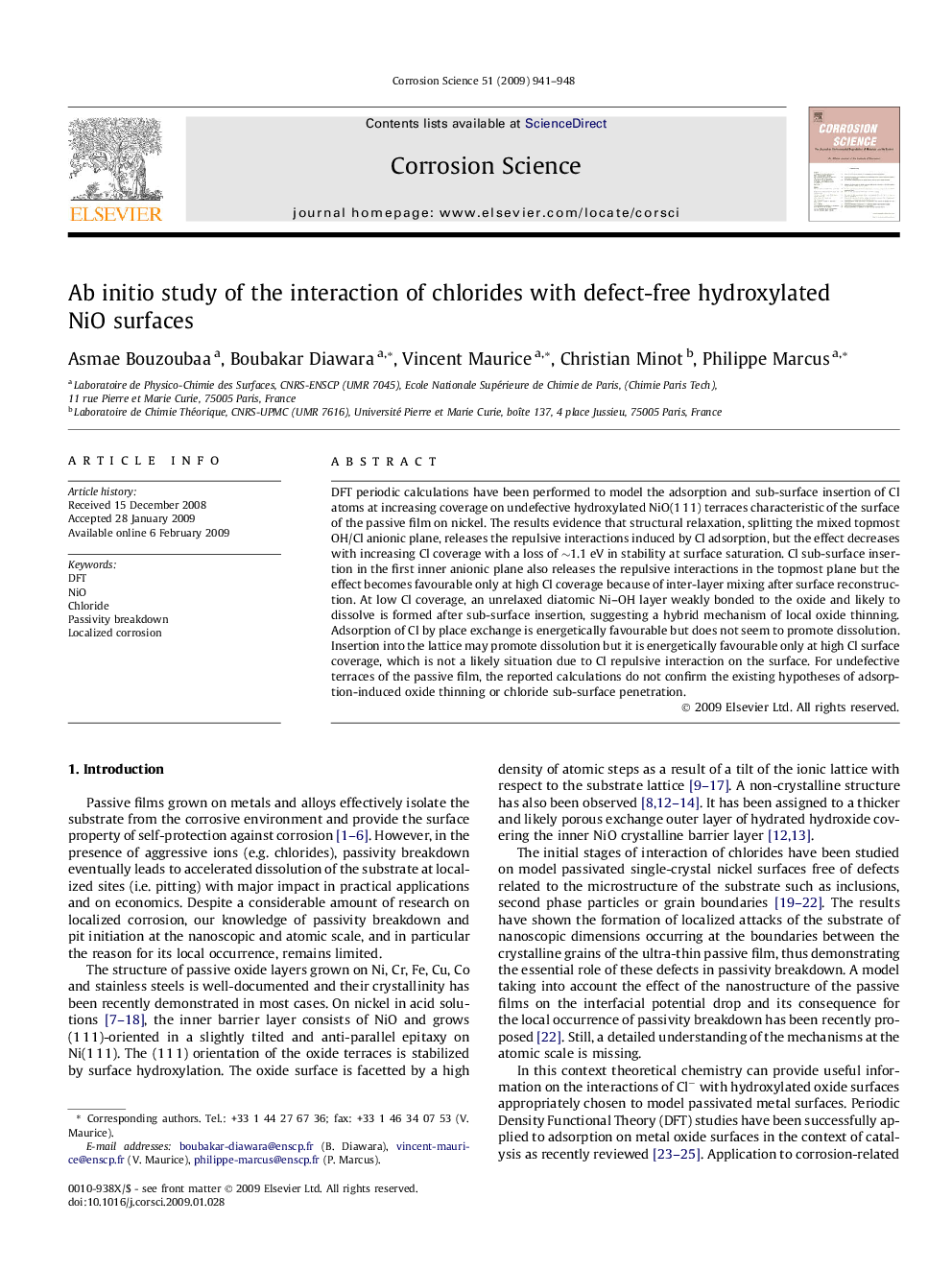| Article ID | Journal | Published Year | Pages | File Type |
|---|---|---|---|---|
| 1470223 | Corrosion Science | 2009 | 8 Pages |
DFT periodic calculations have been performed to model the adsorption and sub-surface insertion of Cl atoms at increasing coverage on undefective hydroxylated NiO(1 1 1) terraces characteristic of the surface of the passive film on nickel. The results evidence that structural relaxation, splitting the mixed topmost OH/Cl anionic plane, releases the repulsive interactions induced by Cl adsorption, but the effect decreases with increasing Cl coverage with a loss of ∼1.1 eV in stability at surface saturation. Cl sub-surface insertion in the first inner anionic plane also releases the repulsive interactions in the topmost plane but the effect becomes favourable only at high Cl coverage because of inter-layer mixing after surface reconstruction. At low Cl coverage, an unrelaxed diatomic Ni–OH layer weakly bonded to the oxide and likely to dissolve is formed after sub-surface insertion, suggesting a hybrid mechanism of local oxide thinning. Adsorption of Cl by place exchange is energetically favourable but does not seem to promote dissolution. Insertion into the lattice may promote dissolution but it is energetically favourable only at high Cl surface coverage, which is not a likely situation due to Cl repulsive interaction on the surface. For undefective terraces of the passive film, the reported calculations do not confirm the existing hypotheses of adsorption-induced oxide thinning or chloride sub-surface penetration.
